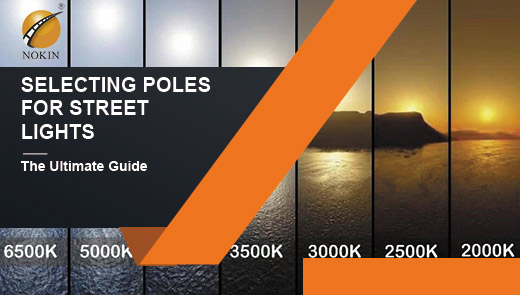How Long Do Solar Flood Lights Last?
Solar flood light is a powerful outdoor lighting device that utilizes sunlight to provide bright illumination over a large area. At night, it not only adds a decorative touch to outdoor spaces such as gardens and backyards, but also enhances the safety of the outdoor environment. Whether it is used in commercial locations such as stadiums and parking lots, or outdoor areas of the home, solar flood lights can play an important role. It works by absorbing solar energy, converting it into electricity and storing it in a rechargeable battery, which is then released for lighting at sunset.
Knowing the lifespan of a solar flood lightis crucial for consumers. This helps consumers make informed purchasing decisions and save money by avoiding the need for frequent replacements due to a short lifespan. At the same time, a longer lifespan means less waste of resources, which is more environmentally friendly and results in greater environmental benefits.
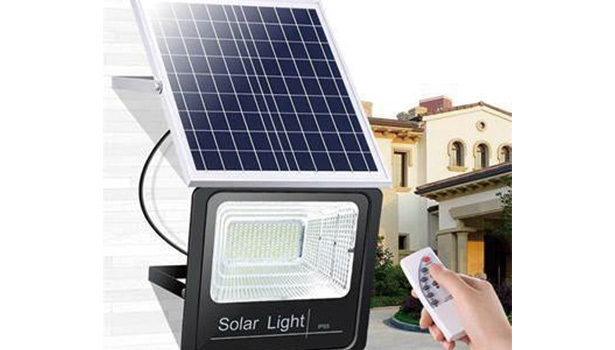
Understanding the Lifespan of Solar Flood Lights
High-quality solar flood lights can last up to 50,000 hours or more thanks to their durable components and advanced LED technology. Solar flood lights offer significant advantages over traditional lighting in terms of longevity and energy efficiency. For example, while traditional incandescent bulbs typically last only 1,000 - 2,000 hours, the long lifespan of solar flood lights greatly reduces the frequency of bulb replacement and lowers maintenance costs.
Factors Affecting the Solar Flood Lights Lifespan
Module quality
Solar Panel
There are several types of solar panels, including monocrystalline, polycrystalline and amorphous. Different types of panels vary in quality and efficiency. Higher-quality panels are more durable and more efficient at converting solar energy into electricity. For example, in low latitudes with abundant sunshine and favorable light conditions, polycrystalline silicon photovoltaic panels are an effective choice for cost reduction due to their simple production process and relatively low price. In areas with more rainy days and insufficient light, monocrystalline silicon photovoltaic panels are more suitable because of their higher power generation efficiency. Amorphous silicon photovoltaic cells have a relatively low power generation efficiency, but in the case of insufficient light, such as rainy days, their power generation efficiency is higher than that of crystalline silicon photovoltaic panels.
Batteries
There are four main types of batteries commonly used in solar flood lights: lead-acid batteries, colloidal batteries, ternary lithium batteries and lithium iron phosphate batteries. The electrodes of lead-acid batteries are composed of lead and lead metal oxides, and the electrolyte is sulfuric acid solution. Their operating voltage is relatively stable, inexpensive and with a high safety factor, but the disadvantages are shorter life, larger volume, and may also cause environmental pollution. However, because of its cost advantage, it still occupies an important position in the solar lamp manufacturing industry.
Gel battery is an upgraded version of lead-acid battery, which is maintenance-free or requires less maintenance. It replaces sulfuric acid electrolyte with colloidal electrolyte, which gradually improves the storage capacity, charging and discharging capacity, safety factor and service life. In addition, colloidal batteries have a wide range of temperature applicability, and can be used in the temperature range of - 40°C - 65°C. They are especially suitable for high latitude cold regions or low latitude tropical regions.
Lithium ternary batteries have the advantages of high specific energy, small size and fast charging speed, but the price is higher. Its depth cycle is about 500 - 800 times, the service life is similar to gel battery, and the application temperature range is - 15°C - 45°C. However, the safety coefficient of Li-ion ternary battery is poor, and if the battery is unstable internally or the manufacturer's process is not satisfactory, it may explode under over-charging or high temperature environment.
Li-FePO4 batteries are widely used in the field of power batteries, such as electric buses, because of their high specific energy, small size, fast charging speed, long life and good reliability. However, its price is the highest among all rechargeable batteries.
LED lamps
High-quality LED lamps are more resistant to degradation and can maintain a stable brightness over a longer period of time. The manufacturer's choice of LED lamps directly affects the light output and lifetime of the flood light. For example, a high-quality LED lamp will remain virtually unchanged over many years of use, whereas a lower-quality LED lamp may experience a noticeable drop in brightness after a short period of time.
Protective cover
A well-made protective cover extends the service life of a solar flood lightby keeping out dust, moisture and physical damage. For example, a sturdy and waterproof cover prevents rainwater from entering the luminaire, avoids short circuits and protects the batteries and other electronic components from corrosion.
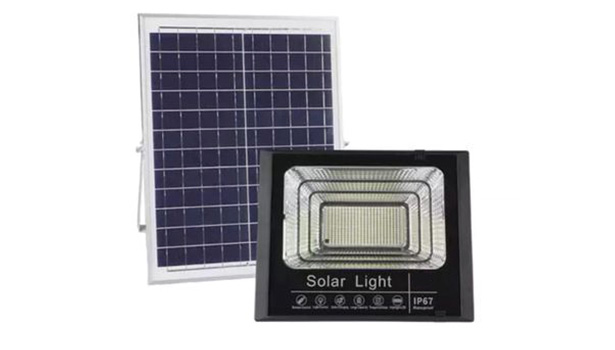
Usage Patterns
Cycle life of components
The number of charge/discharge cycles of a battery affects its service life. Each battery has a specific cycle life ranging from 500 to 15,000 cycles. Once this number of cycles is reached, the efficiency of the battery begins to decrease. Similarly, frequent and prolonged use of LED lights and solar panels can accelerate their wear and tear. For example, switching an LED light on and off frequently may shorten its life, as the current surge at each switch may damage the LED chip.
Operating cycle
The duty cycle is the percentage of the total time the solar flood lightis on. A high duty cycle may shorten the life of the lamp. If a solar flood lightis lit for up to 12 hours a day, the components will wear out faster and have a shorter service life than if the same model is lit for only 4 hours a day.
Environmental conditions
Extreme temperatures
Hot summers can cause the battery to overheat, shortening battery life. In the cold winter months, low temperatures can slow down the chemical reactions within the battery, affecting its performance. Solar panels are also less efficient at extreme temperatures, which in turn affects the overall operation and life of the flood light. For example, in high temperature environments, chemical reactions within the battery may accelerate, leading to a decrease in battery capacity. And in low temperatures, the internal resistance of the battery will increase, making the actual usable capacity of the battery decrease.
Rain and snow
If a solar flood lightis not properly sealed, moisture may enter the interior of the luminaire, leading to corrosion of the components. Snow covering the solar panel will block the sunlight and reduce the charging efficiency, which will also affect the service life of the flood lightin the long run. For example, rainwater entering the interior of the luminaire may cause metal parts to rust, affecting the stability of circuit connections. And snow covering the panels for a long period of time can leave the batteries in a state of power loss for a long period of time, damaging battery life.
Exposure to the elements
UV rays degrade the plastics and other materials of the luminaire, weakening its structural strength and potentially shortening the life of the flood light. For example, after a period of outdoor use, the plastic housing of a luminaire may become brittle, discolored, or even cracked due to UV exposure, reducing the luminaire's ability to protect its internal components.
Maintenance of Solar flood lights
Consequences of lack of maintenance
Lack of maintenance can lead to premature damage to the LED lamps, solar panels or batteries. For example, excessive dust buildup on the surface of solar panels reduces sunlight absorption, decreases charging efficiency, and may over-discharge the batteries, thus affecting battery life. Neglecting to check for loose wiring connections or signs of wear and tear on components can lead to system failure. For example, battery terminals that have not been inspected for a long period of time may have poor contact due to oxidization, affecting the charging and discharging of the battery.
The Importance of regular inspections
It is vital that solar flood lights are inspected regularly to ensure that all components are functioning properly. Regular inspections allow potential problems to be identified and resolved in a timely manner, preventing small problems from evolving into major failures and thus extending the service life of the light. For example, check the appearance of the batteries once a month for swelling or leakage, and clean the solar panels quarterly to maintain their good charging performance.
Solar panel efficiency
Different types of solar panels vary in efficiency. Monocrystalline panels are more efficient, polycrystalline panels are the next most efficient, and amorphous panels are relatively less efficient. An efficient panel maintains better battery health because it charges the battery more efficiently, reducing the burden on the battery and extending its life. For example, monocrystalline panels are able to charge the battery more than amorphous silicon panels under the same light conditions, keeping the battery in a better performance state over the long term.
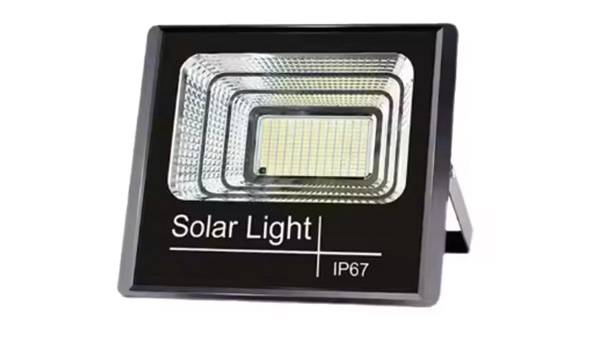
Tips to Extend the Service Life of Solar Flood Lights
Regular maintenance
Cleaning solar panels
When cleaning solar panels, you should use a soft, damp cloth to gently wipe them and avoid using sharp or rough cleaning tools to scratch the panel surface. You can choose to clean in the morning or evening when the sun is not too strong, first of all, the panel surface of the large pieces of dust and debris with a soft brush to gently sweep away, and then wipe with a damp cloth. Be careful not to leave moisture on the surface of the battery board, so as to avoid the formation of water stains that affect the absorption of light.
Checking the battery and LED lights
Regularly check the battery for abnormalities such as swelling, leakage or odor. For LED lights, observe whether there is uneven brightness, flickering or no light at all. If the battery is found to be faulty, it should be replaced in time. For LED lamps, try to check whether the wiring connection is loose, and if it cannot be solved, the LED lamp beads should be replaced.
Ensure the system is working properly
Regularly test the entire lighting system to check if the solar panels are charging properly, if the batteries are storing and releasing power, and if the LEDs are lighting up properly. Simple tools such as a multimeter can be used to check that the voltage and current in the circuit are within normal limits. If problems are found in the system, the cause of the problem should be investigated and repaired in a timely manner.
Optimize the installation location
Adequate sunlight
Install the solar flood lightin a sunny location, such as the northern hemisphere facing south. Before installation, some mobile apps or online mapping tools can be used to determine the optimal installation location to ensure that the solar panels can receive as much sunlight as possible throughout the day. Avoid installing them under building shadows, tree shadows, or other coverings.
Avoid shading
Look carefully around the installation site for trees, buildings, and other objects that may block sunlight at different times. If it is not possible to avoid installing in an area where there is shade, you can adjust the angle or position of the light fixture to minimize the effect of shade on the charging of the solar panels. For example, an extension bracket can be used to mount the luminaire higher than the shade to ensure that the panel receives full sunlight.
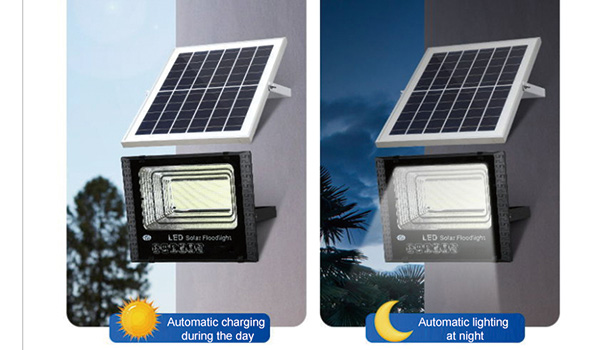
Battery Management
Avoid overcharging and deep discharging
Overcharging will cause the battery to heat up, expand or even be damaged, while deep discharging will shorten the cycle life of the battery. It is important to reasonably control the charging and discharging process of the battery to avoid overuse of the battery. For example, do not leave the battery fully charged for a long period of time, and do not charge the battery only when it is extremely low.
Use a solar charge controller
A solar charge controller can effectively regulate the charging process to prevent overcharging and deep discharging of the battery. When choosing a solar charge controller, select the right model according to the type and capacity of the battery and the power of the solar flood light. When installing, follow the instructions to properly connect the controller to the battery, solar panel and LED lights to ensure proper operation.
Quality Assurance
Research reputable manufacturers
When buying solar flood lights, research the manufacturer's reputation by checking consumer reviews, industry certifications, and the manufacturer's track record. You can check the reviews of other users on different brands of products on major e-commerce platforms, professional lighting forums, and other channels. Choose products from manufacturers that have a good reputation and have obtained relevant quality certifications (e.g. CE certification, UL certification, etc.).
Importance of brand reputation
Well-known and reputable brands usually pay more attention to the quality of their products, using high-quality components and strict quality control. Products from these brands tend to have better performance and a longer lifespan. For example, some brands that have been specializing in solar lighting for a long time are able to produce reliable quality solar flood lights with their rich experience and advanced technology, providing consumers with a longer service life.
Protective Measures
Installation of protective housing
Protective housings or covers can be installed for solar flood lights to protect them from harsh weather conditions. Protective housings can be made of waterproof, dustproof and sunproof materials, and should be installed in such a way as to ensure that they are secure and well sealed. For example, in areas where it rains frequently, waterproof housings with drainage holes can be installed to prevent rainwater from accumulating and to protect the internal components of the luminaire from rainwater erosion.
Consider waterproofing measures
In addition to installing protective housings, other waterproofing measures can be taken, such as applying waterproof adhesive to exposed electrical connections and using corrosion-resistant materials for mounting brackets. These measures can further improve the durability of solar flood lights in harsh environments. For example, in environments with high salt content such as seashores, the use of mounting brackets made of stainless steel can effectively prevent the brackets from rusting and extend the installation stability and service life of the lamps.
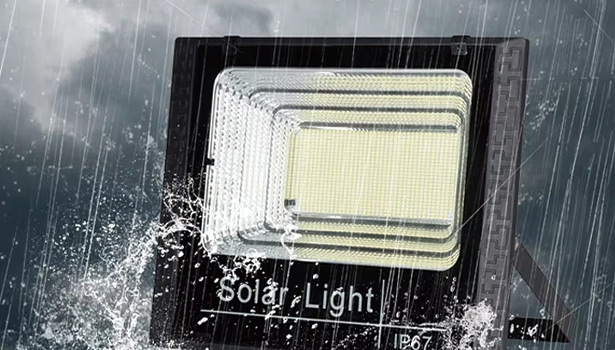
There are many factors that affect the service life of solar flood lights, including the quality of components, usage patterns, environmental conditions, maintenance, and the efficiency of solar panels. By understanding these factors, we can take appropriate measures to extend their service life, such as regular maintenance, optimizing the installation location, managing batteries appropriately, choosing reliable quality products, and taking proper protective measures.
When purchasing solar flood lights, consumers should fully consider the above factors and choose products that can provide long-lasting and reliable service. A long-lasting solar flood lightnot only saves users money, but also contributes to the realization of a more sustainable and energy-efficient outdoor lighting solution, which is conducive to the protection of the environment and resources.

